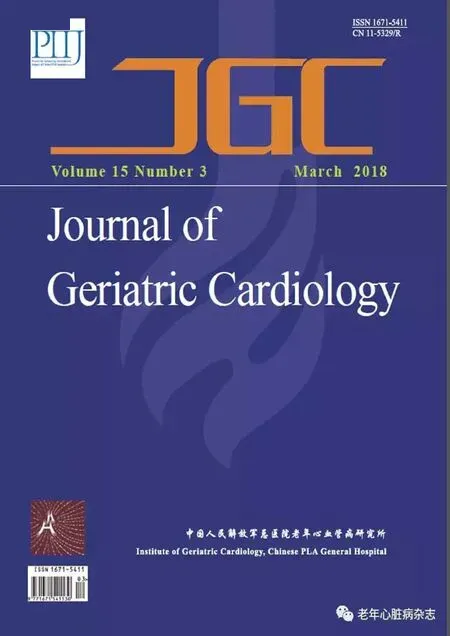Mitral pseudostenosis due to a large left atrial myxoma
Konstantinos C Theodoropoulos, Giovanni Masoero, Gianpiero Pagnano, Nicola Walker,Alexandros Papachristidis, Mark J Monaghan
Department of Cardiology, King’s College Hospital NHS Foundation Trust, King’s College London, London, UK
Myxomas are benign cardiac tumours that are mostly(75%) located in the left atrium, but they also can be found in the right atrium (15%–20%), in the right ventricle (4%)and in the left ventricle (3%).[1]

Figure 1. Echocardiographic assessment of atrial myxoma. (A): Transthoracic echocardiogram, apical four chambers view in diastole,showing the myxoma in the left atrium, protruding in the left ventricle through the mitral valve; (B): TEE, mid-esophageal four chambers view in systole, showing the myxoma in the left atrium; (C): TEE, mid-esophageal bicaval view showing the myxoma in the left atrium attached to the fossa ovalis; (D): TEE, mid-esophageal long axis view in early diastole, showing the myxoma in the left atrium whilst starting to protrude in the left ventricle through the mitral valve. LV: left ventricle; RA: right atrium; RV: right ventricle; TEE: transesophageal echocardiogram.

Figure 2. Doppler and 2D assessment of mitral pseudostenosis. (A): TEE, mid-esophageal four chambers view in diastole, showing the myxoma in the left atrium, which protrudes in the left ventricle through the mitral valve; (B): continuous wave Doppler through the mitral valve in the mid-esophageal four chambers view showing a mean pressure gradient of 13 mmHg. LV: left ventricle; RA: right atrium; RV:right ventricle; TEE: transesophageal echocardiogram.
A 71-year-old male presented to a district hospital with exertional dyspnea, orthopnea, postural dizziness and significant weight loss over the last year. He had no known previous cardiac history and from his medical history he had only hypertension and diabetes. A transthoracic echocardiogram showed a large mass in the left atrium (Figure 1A),otherwise the rest of the study was unremarkable. The patient was transferred to our tertiary centre for prompt resection of a possible left atrial myxoma. The pre-operative transesophageal echocardiogram demonstrated the large mass filling the whole left atrium with measured dimensions of 7.2 cm and 4.5 cm (Figure 1B). It was attached on the left side of the fossa ovalis (Figure 1C) and was protruding during the diastole through the mitral valve into the left ventricle (Figures 1D, 2A). This was causing mitral pseudostenosis with a mean pressure gradient of 13 mmHg, suggesting severe mitral stenosis (Figure 2B). The mitral valve leaflets were intact and only trace mitral regurgitation was detected.The mass and part of the interatrial septum were surgically removed and sent to histopathology. The interatrial septum was repaired with an oval bovine pericardial patch. The post-operative transesophageal echocardiogram showed no interatrial communication or significant mitral regurgitation.The histopathology report confirmed the diagnosis of a myxoma and the patient had an uneventful recovery.
Myxomas, as already been mentioned are benign cardiac tumours, and their size varies. They can have a diameter that ranges between 1–15 cm. Their clinical features are determined by their size, location and mobility.[1,2]Most symptomatic patients will have findings from the classic triad of intracardiac obstruction, embolism and constitutional symptoms.[1]The obstructive findings (dizziness, dyspnea, cough,pulmonary edema and heart failure) can occur due to atrioventricular valve obstruction. Our patient’s symptoms were caused by the obstruction of the mitral valve from the myxoma during the diastolic phase of the cardiac cycle.This can result the ‘pseudostenosis’ of a structurally normal mitral valve. Embolic phenomena can affect the pulmonary or the systemic circulation, depending on the tumour location and the existence of interatrial communication. The constitutional symptoms (weight loss, fever, myalgia, arthralgia, Raynaud syndrome) are mainly attributed to the secretion of interleukin-6 by the myxoma tumour cells.[3]Small myxomas can be asymptomatic and are incidentally found with echocardiography or other imaging modalities.The only acceptable therapy for cardiac myxomas is the prompt surgical resection in order to eliminate the risk of embolization. The overall risk for recurrence of a myxoma after resection is 2%–13%, thus it is recommended semiannual follow-up with echocardiography for at least a period of four years after resection.[1,4]
References
1 Bruce CJ. Cardiac tumours: diagnosis and management.Heart2011; 97: 151–160.
2 El Sabbagh A, Al-Hijji MA, Thaden JJ,et al. Cardiac myxoma: the great mimicker.JACC Cardiovasc Imaging2017; 10:203–206.
3 Endo A, Ohtahara A, Kinugawa T,et al. Characteristics of cardiac myxoma with constitutional signs: a multicenter study in Japan.Clin Cardiol2002; 25: 367–370.
4 Elbardissi AW, Dearani JA, Daly RC,et al. Survival after resection of primary cardiac tumors: a 48-year experience.Circulation2008; 118: S7–S15.
 Journal of Geriatric Cardiology2018年3期
Journal of Geriatric Cardiology2018年3期
- Journal of Geriatric Cardiology的其它文章
- Takotsubo cardiomyopathy after pacemaker implantation
- Simultaneous multiple coronary arteries thrombosis in patients with STEMI
- Anterior myocardial pseudoinfarction in a patient with diabetic ketoacidosis
- Successful conservative management of Class III iatrogenic aortic dissection
- Should atrial fibrillation patients with hypertension as an additional risk factor of the CHA2DS2-VASc score receive oral anticoagulation?
- The subcutaneous implantable cardioverter defibrillator––review of the recent data
